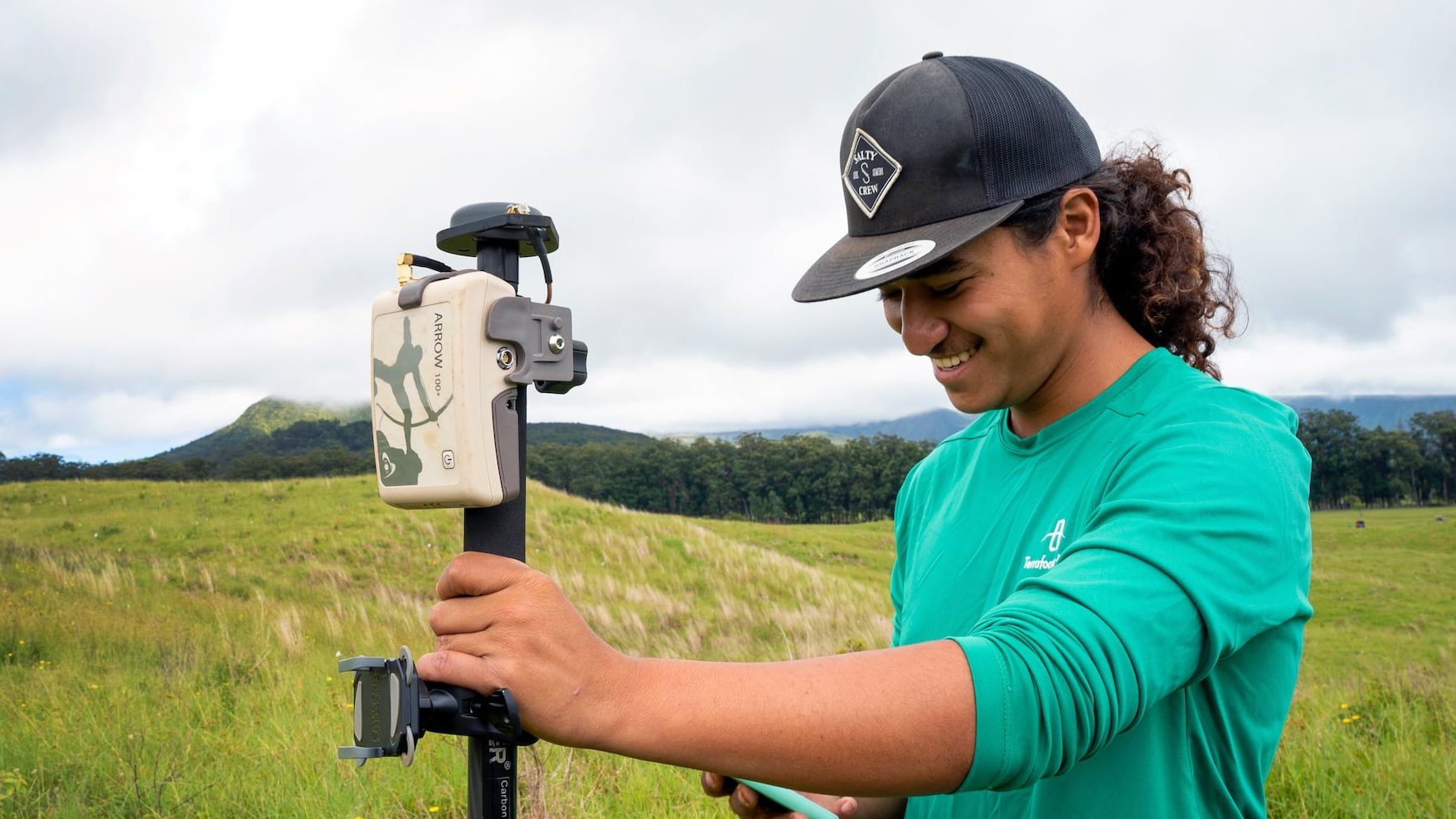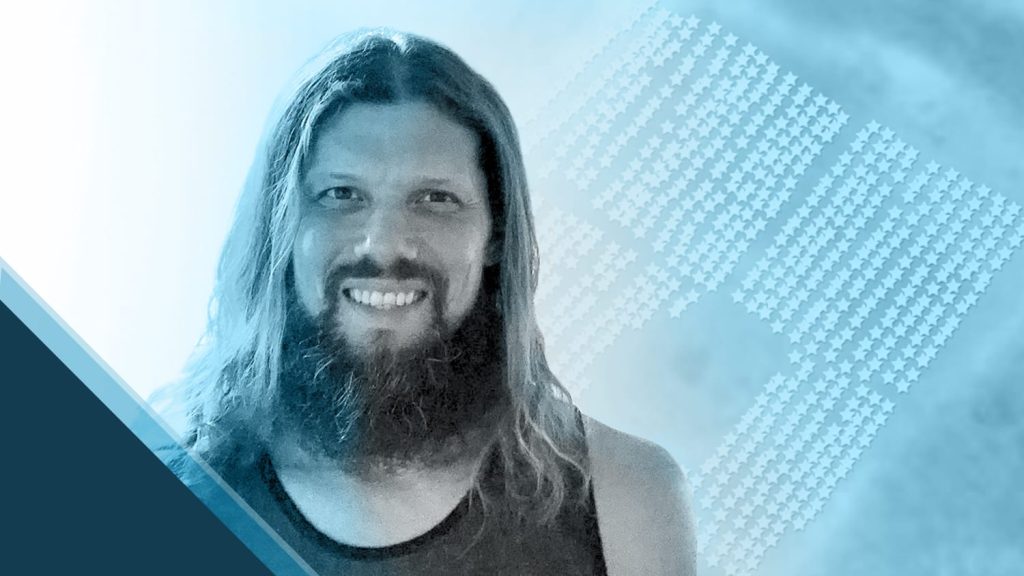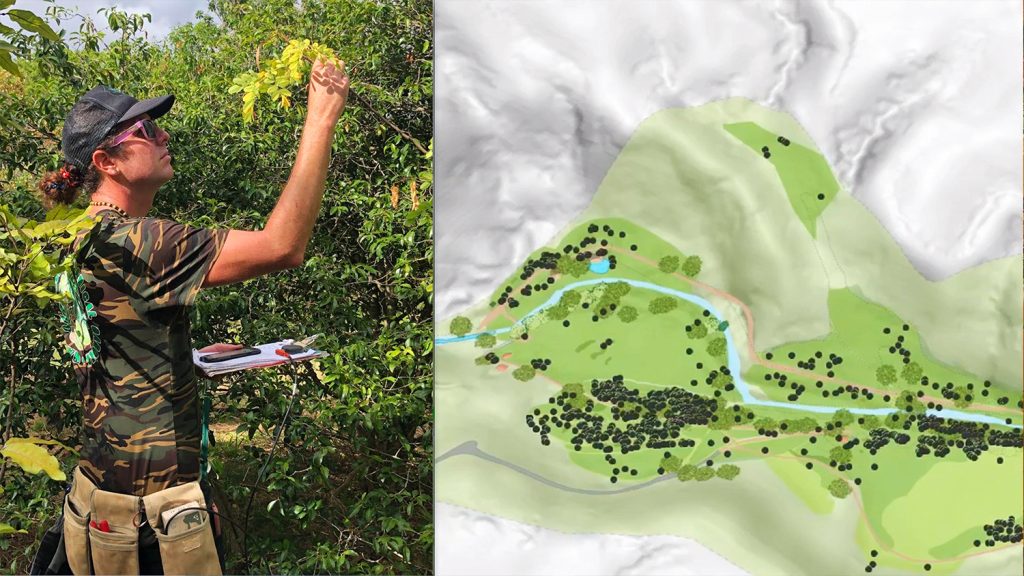Warming temperatures, rising sea levels, and a multitude of environmental issues are visibly changing the world around us. How can one person, or even a group of people, begin to find a solution?
Yishan Wong, who founded the Hawaiian forest restoration startup Terraformation in 2017, believes reversing course starts with going back to basics: trees.
“We believe that forest restoration is one of the most effective and immediately scalable solutions that we have for fighting climate change,” Wong said. “And so, our job is to accelerate that worldwide as much as possible.”
According to Terraformation’s website, Wong’s research showed that “native forest restoration outperforms any other known method of carbon capture by nearly an order of magnitude.” Trees naturally capture and store carbon and, most importantly, are accessible throughout the world. Out of all the ways to combat carbon emissions, Wong found that native reforestation carried the lowest cost and risk.
Their goal was to launch a proof-of-concept at certain sites in Hawai‘i with the objective of scaling it in conjunction with partners globally.
“We help projects all over the world to develop nurseries, to develop seed banks, and to have the software that they need to manage and to monitor their projects, and to grow and establish healthy forests,” said Jill Wagner, Director of Hawai‘i Island Seed Bank and consultant to Terraformation.
From Seedlings to Forest: A Process of Patience
Once an area of land is identified for reforestation, the team determines which native plants are suitable for the area. Next, they collect native seeds of these species from the field and bring them back to the nursery. There, the seeds are germinated as well as stored in seed banks for future generations.
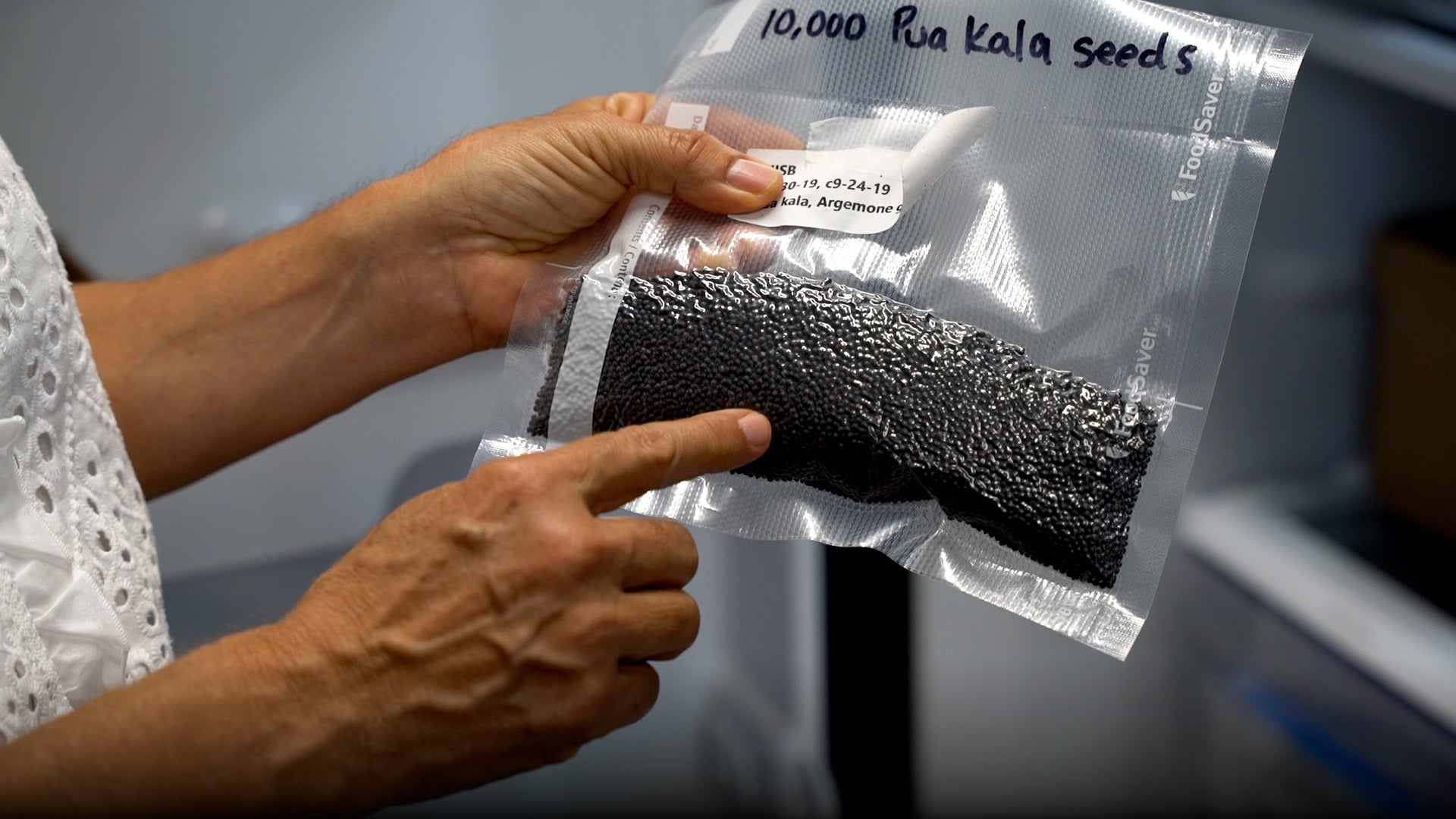
Once germinated, the seedlings are placed outside to get used to the environment and become “hardened” for the conditions they will experience naturally in the field. After this, Terraformation field technicians plant the hardened plants at reforestation sites for natural survival.
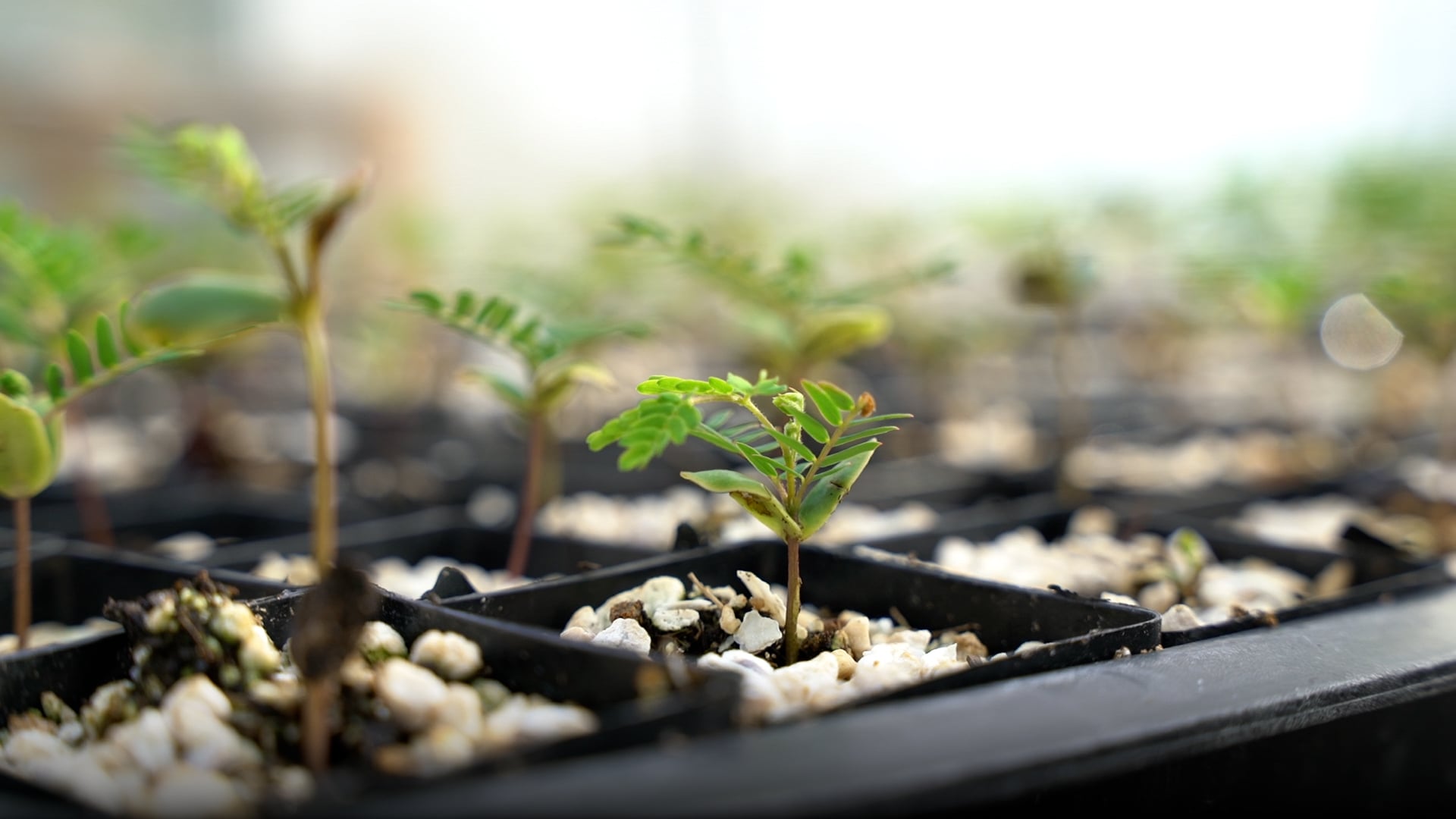
This process takes patience and commitment. On average, Wagner says, it takes about 10 years to re-establish healthy, native forests.
The Need for High Accuracy: Tracking a Native Forest Pattern
Forest restoration isn’t as easy as just planting neat rows of seedlings. In nature, plants don’t grow in grids of identically spaced rows of species. So, to mimic how a native ecosystem could have organically grown, Terraformation plants in intentionally irregular formations. A māmaki plant might be planted in one spot with a koa tree a half meter away, and so on until the entire parcel is reforested. These plants together will grow into a healthy, and diverse ecosystem that mimics a natural one.
“You’re trying to create a self-sustaining system,” Wagner said.
But this planting strategy makes it harder to record and revisit each seedling over time. You can’t, for instance, revisit a grid of all the māmaki. So, Terraformation turned to digital maps, which allow them to map, track, revisit, and monitor each plant individually.
“Because spacing can be a meter or a meter and a half apart, high accuracy is really important to ensure the long-term tracking and monitoring of these plants,” said Brian Tucker, Geospatial Information System (GIS) Specialist at Terraformation.
The Solution: High-Accuracy GNSS and GIS
To track these plants with high accuracy, Terraformation sought out global navigation satellite system (GNSS) and GIS technologies. After trying a legacy GNSS receiver that could not meet their needs for consistent accuracy and reliability, Terraformation started using an Arrow 100+™ GNSS receiver alongside Esri’s ArcGIS Field Maps.
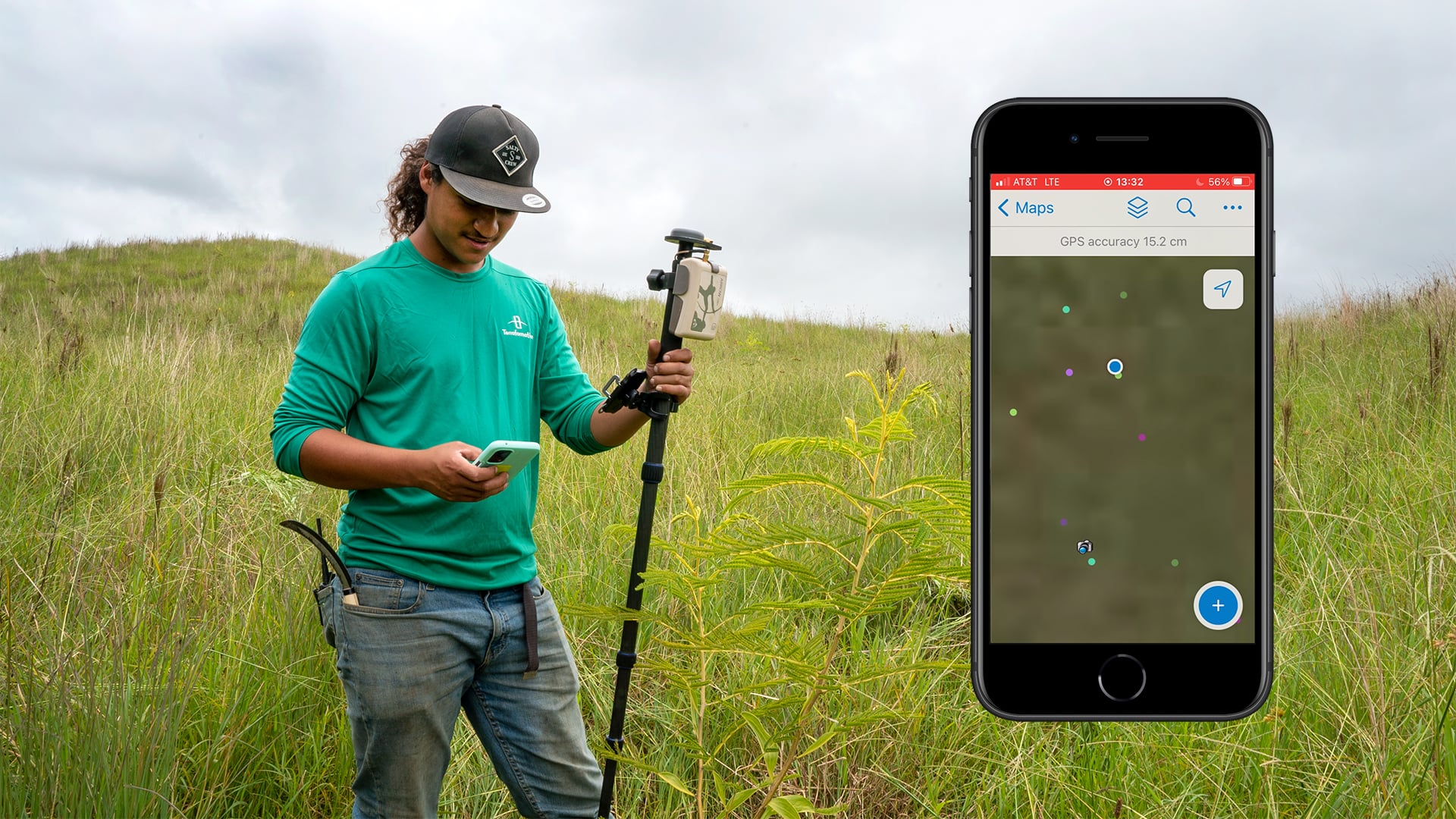
The Arrow 100+™ provides submeter accuracy using WAAS differential corrections, without any need for a paid subscription. The receiver is paired via Bluetooth® to iOS® devices, which collect spatial information via the ArcGIS Field Maps data collection app. This combined technology allows restoration crews to map plants in real-time with high accuracy.
“I can’t emphasize enough the ease of [the Arrow 100+™], of how it pairs with Esri’s Field Maps app,” Tucker said. “You have the mapping interface combined with the ability to collect data. Having that dual functionality, that is really powerful.”
With ArcGIS Field Maps, the field crews can collect not only the exact location of the plant, but also specific information on the species type, the health of the plant, and even photos to help future crews navigate back to the specific point in the future.
This information is submitted in real time to an ArcGIS Online map. When viewing the map back in the office, team members can see the species distribution sorted by color. By clicking on the individual points, they can gain insight into the details of each plant.
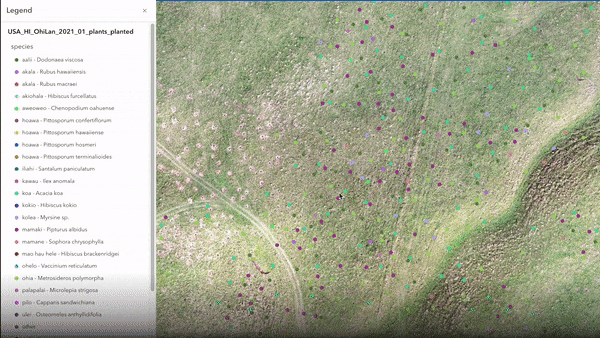
The data is also gathered into an ArcGIS Dashboard, where viewers can see a summary of the number of plants planted, alongside the species distribution, to track the overall process of the restoration site.
“People love to just see the numbers and see the impact going on,” Tucker said. “And if they check in to the dashboard monthly, and see the numbers rise — it’s pretty powerful.”
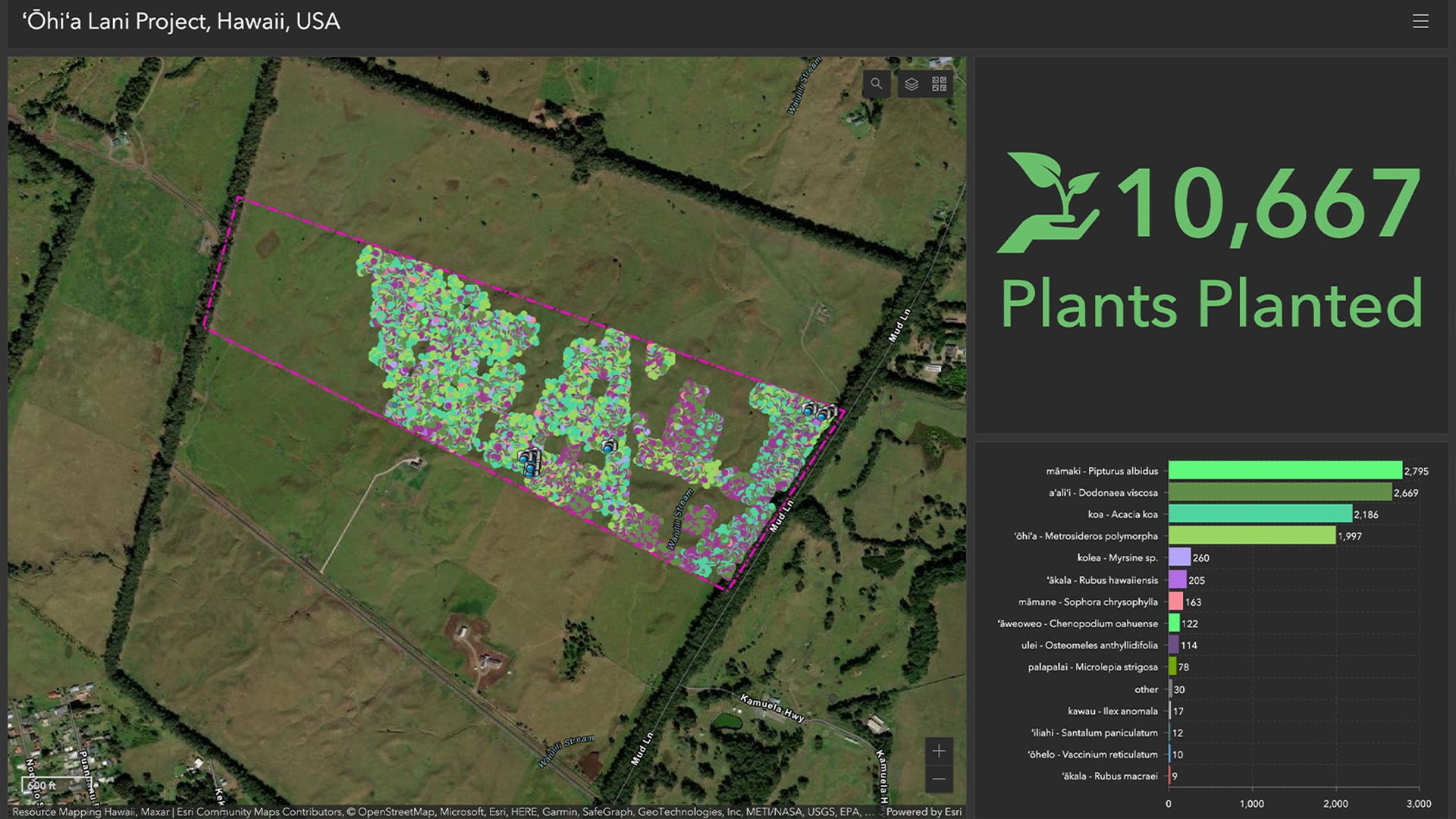
The Results: Watching Degraded Lands Come to Life
The ʻŌhiʻa Lani Project is a site located on Hawai‘i Island (sometimes called the “Big Island”). This degraded land (degraded land is land that has lost some degree of its natural productivity due to human-caused processes) was once cleared to make room for farmland, replacing the lush wet native forest with barren hills of invasive grasses. Now, Terraformation is restoring the site with native trees, plants, and shrubs.
In just nine months, the site went from zero native plants to supporting over 10,000. By the end of 2023, restoration technicians like Rodriguez-Herring are on track to add a total of 30,000 plants to this once-barren site.
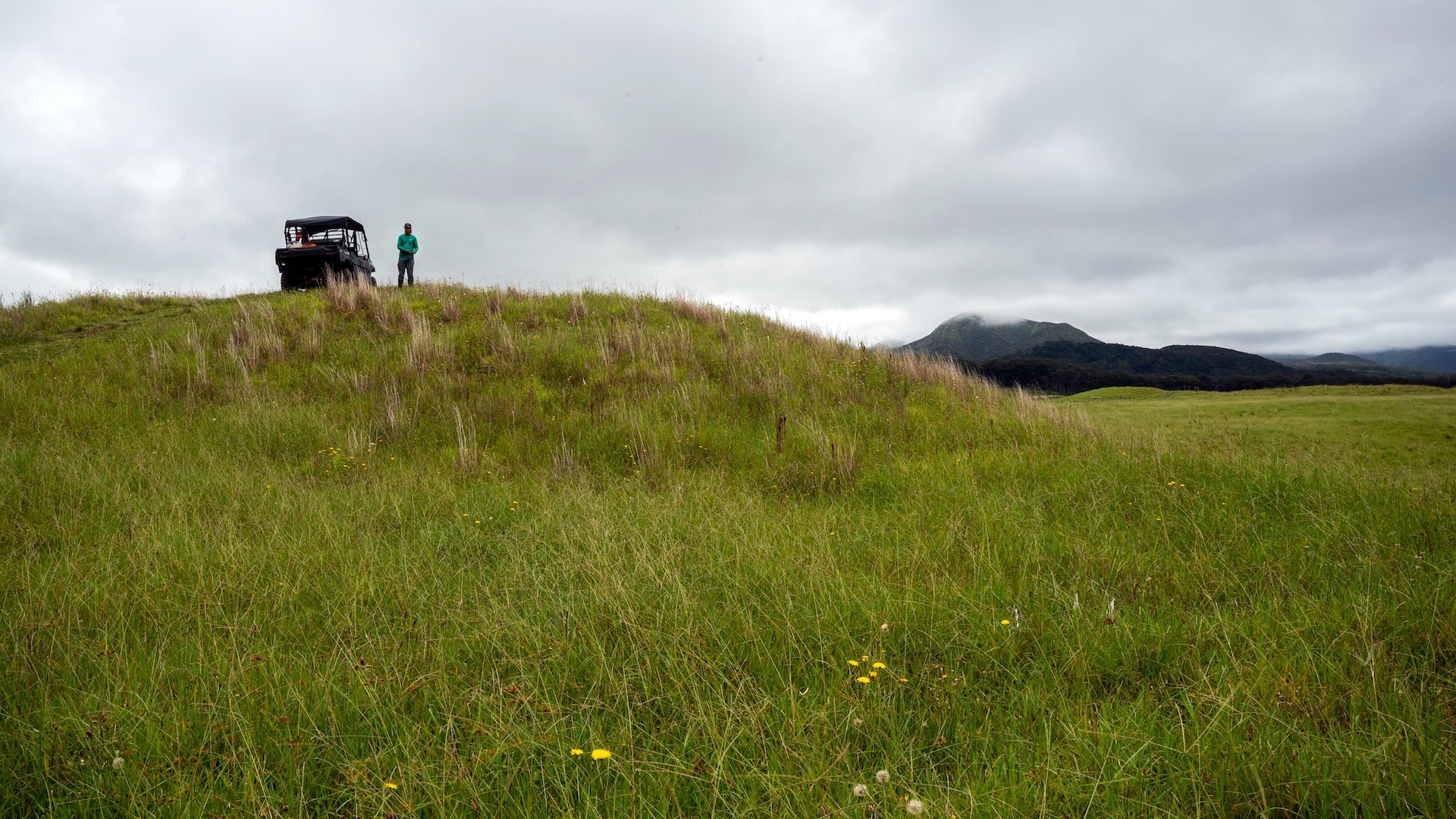
“Every plant we plant is going to be here for the next generations,” Rodriguez-Herring said.
As the plants grow, the restoration team will visit them to check in on their health and status. These points will then be updated on the map to give Terraformation data on how their restoration sites are growing and if they are thriving.
Accountability: An Essential Piece of the Puzzle
The highly accurate ArcGIS Online maps serve a second purpose, one that is essential to Terraformation’s bigger mission: to secure more funding that can be used to sustain the project and, most importantly, scale.
“One of the really important missing pieces to reforestation is accountability,” said Wong. “Ideally, you want full accountability, because you can really track the data for science. You can know exactly how much carbon is being sequestered.”
With irrefutable data pointing to how many healthy plants Terraformation has restored, and therefore information about how much carbon can be sequestered, Terraformation can provide a compelling argument for organizations capable of providing financial support.
Looking Ahead: A Collective Goal
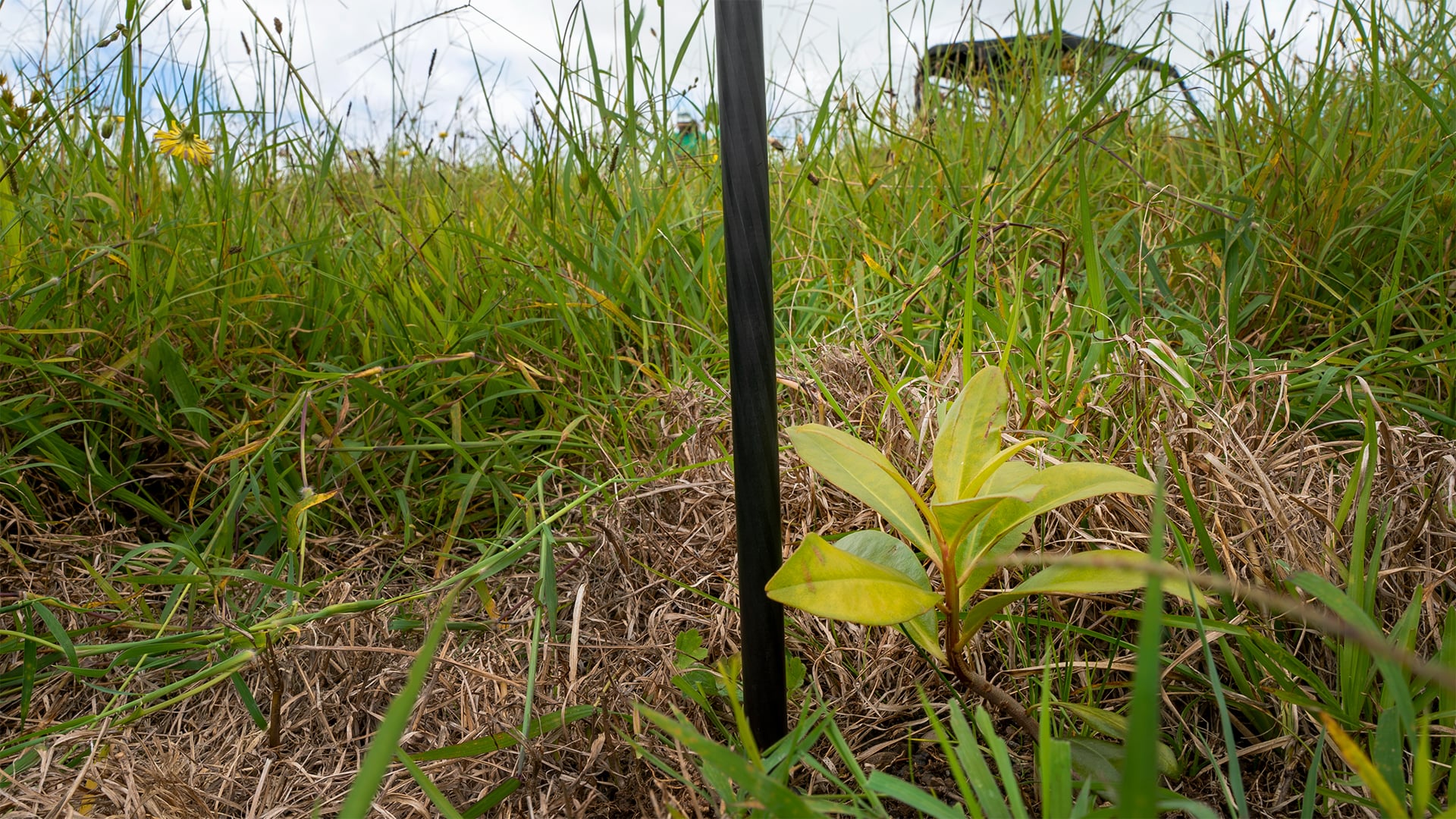
Terraformation intends these sites in Hawai‘i to serve as proof of concept that this process can be done across the globe. In leading by example, Terraformation hopes to show others a simple path toward bettering the environment.
Wong recognizes not everyone will participate in the ambitious goal of global reforestation. But he and the Terraformation team believe this goal is not only worth striving toward, but also within reach.
“Local communities are the protectors of the forest,” said Wagner. “And we want to leave the next generation with a resource, and with healthy forests. Everyone should be involved in this.”
To learn more about Terraformation’s mission and how you can get involved, visit Terraformation’s website for online learning resources.
Download a PDF of this article in ENGLISH.

